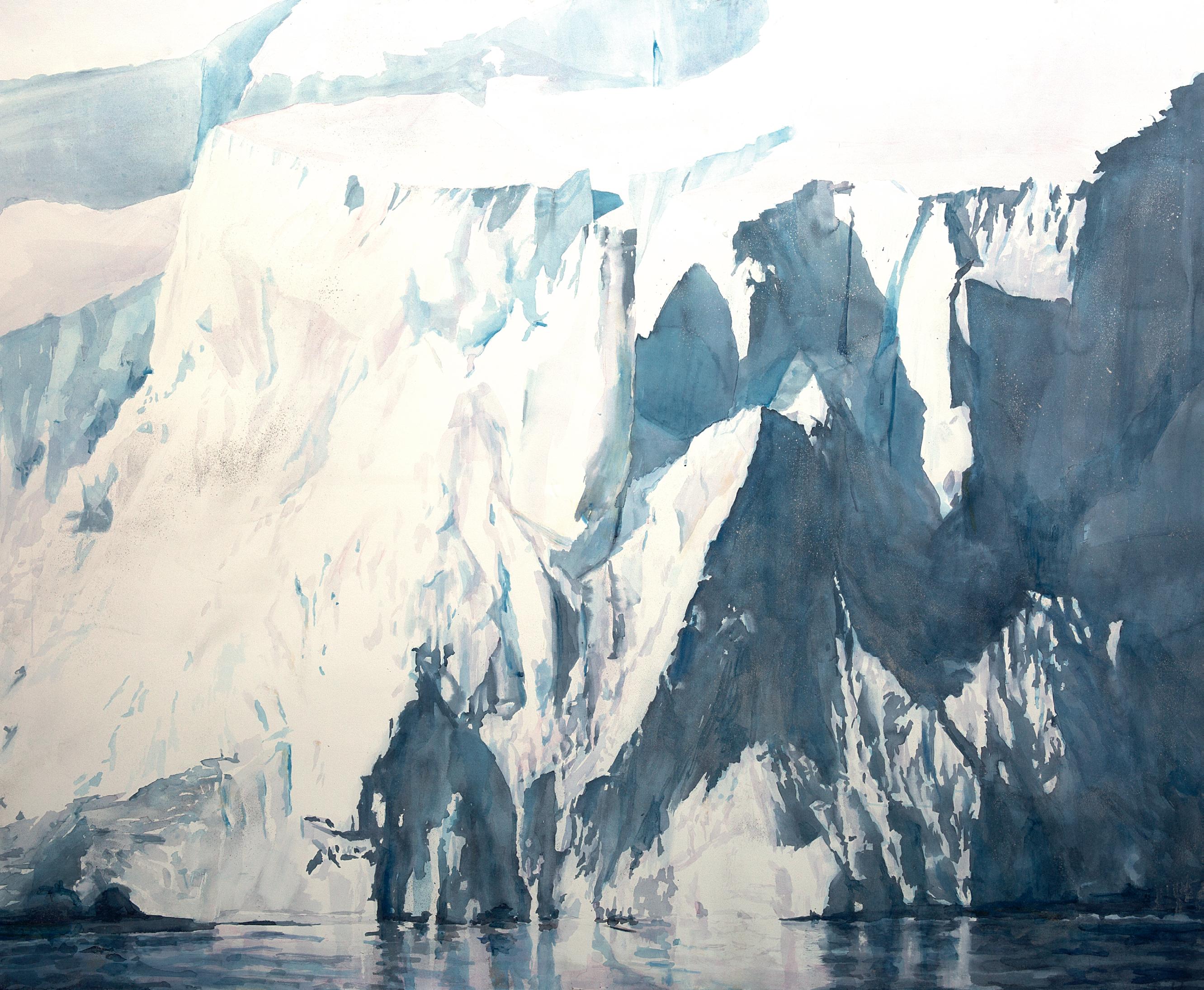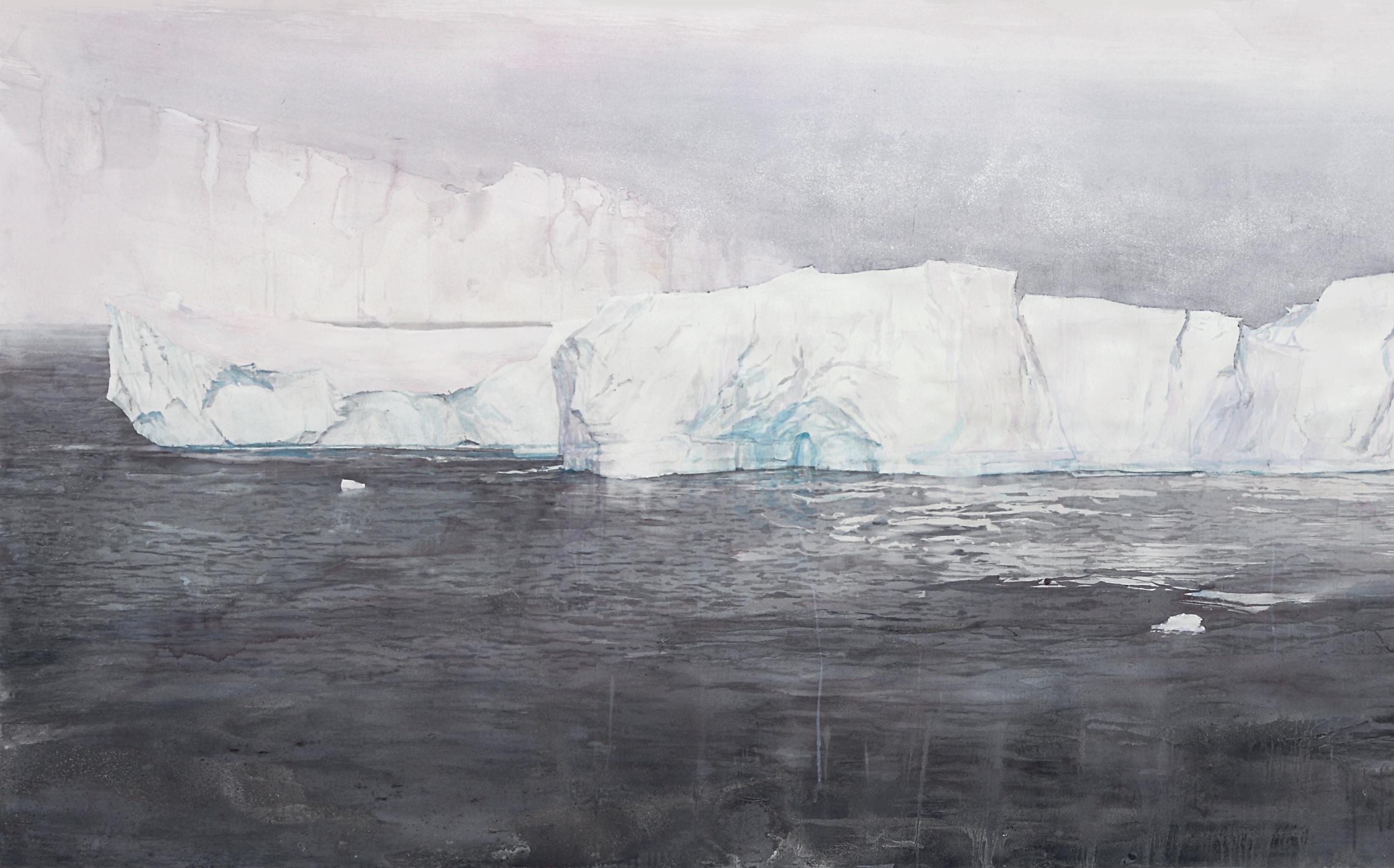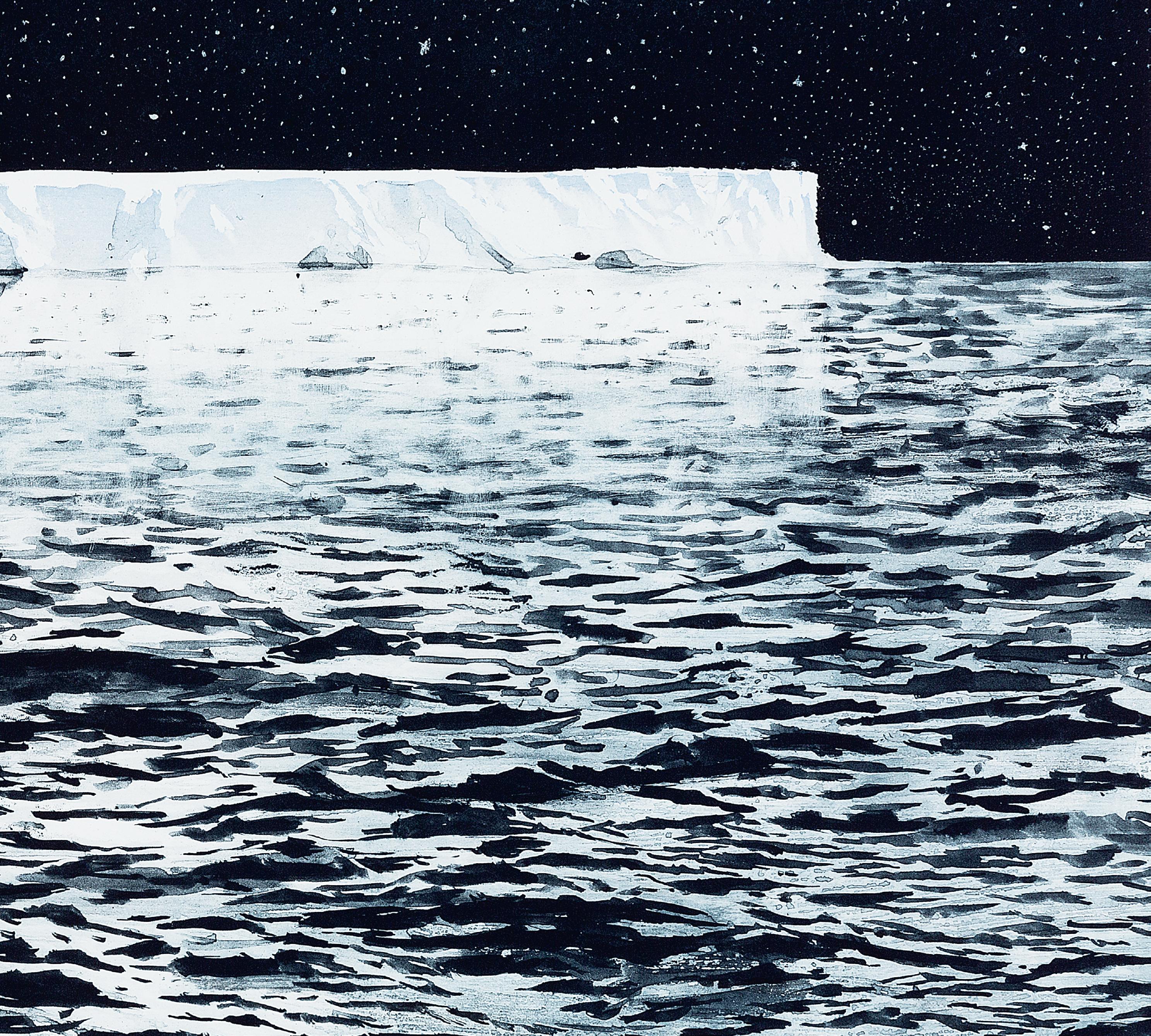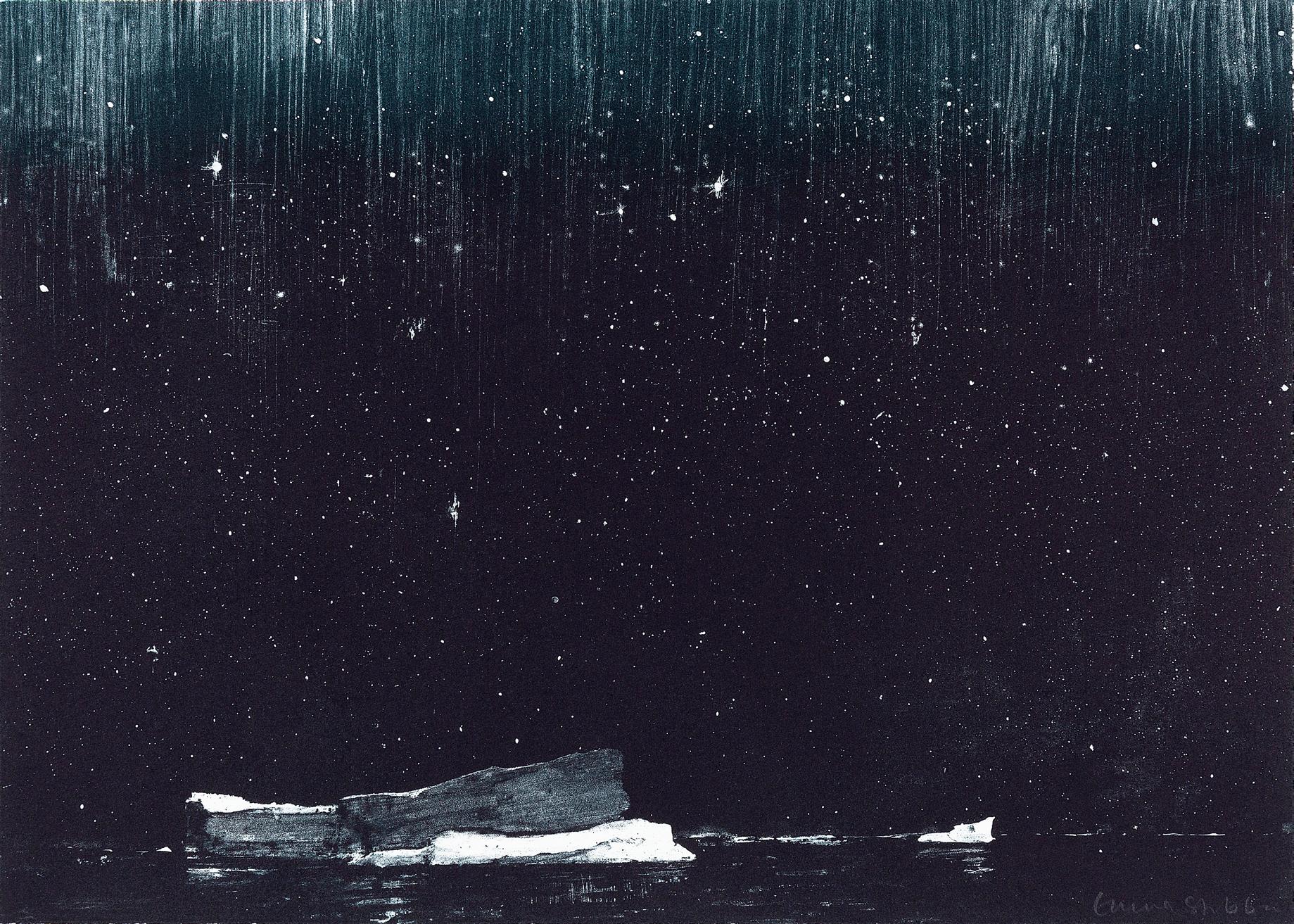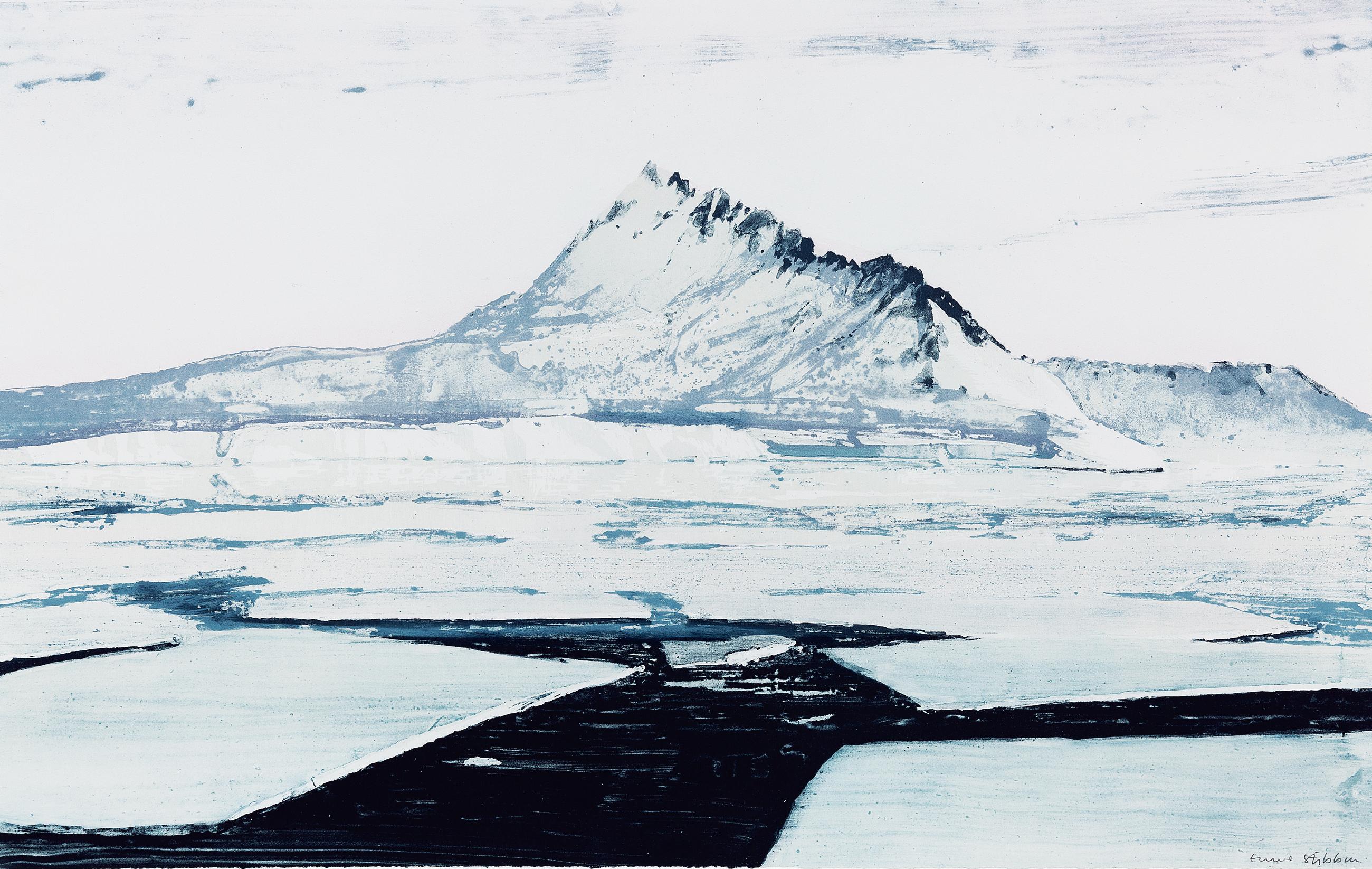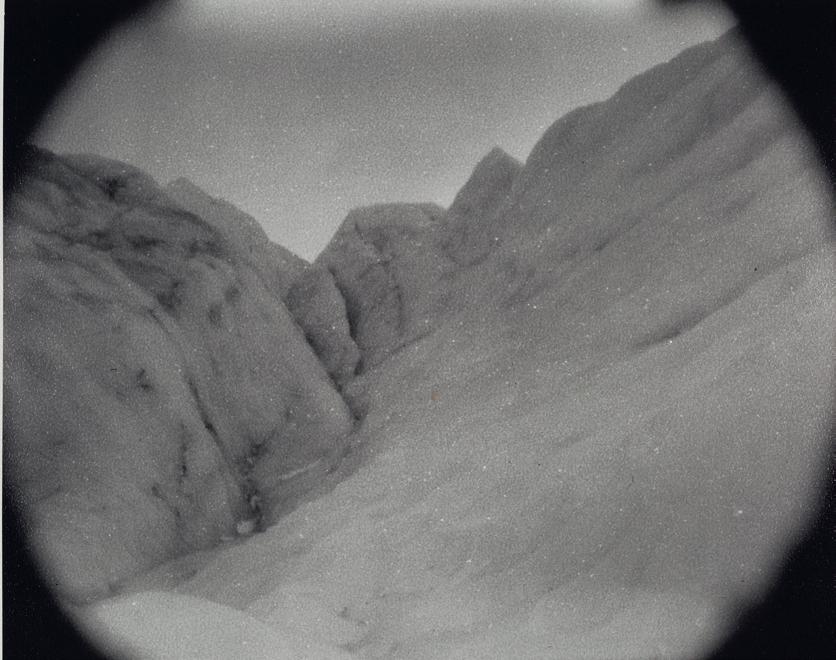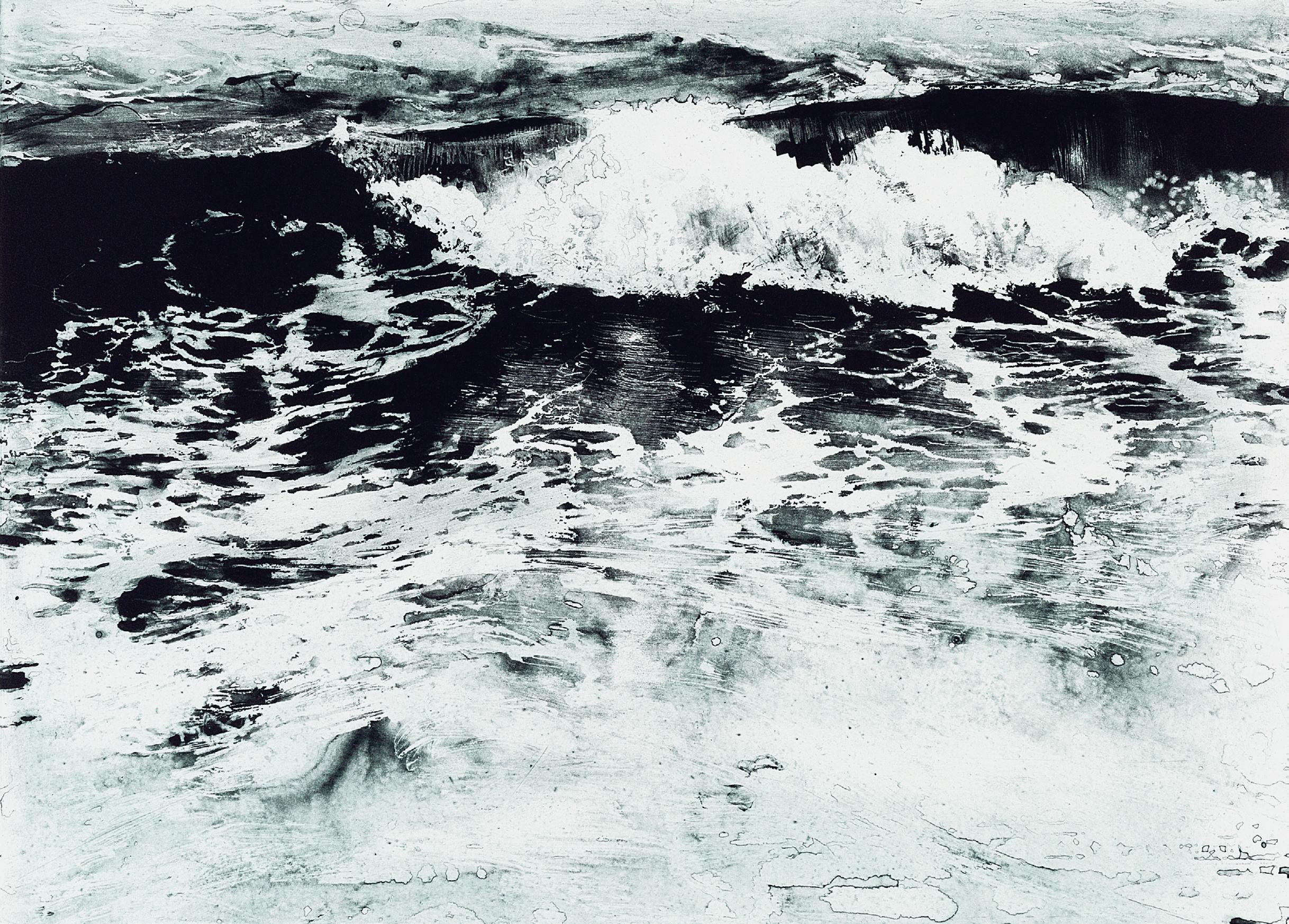






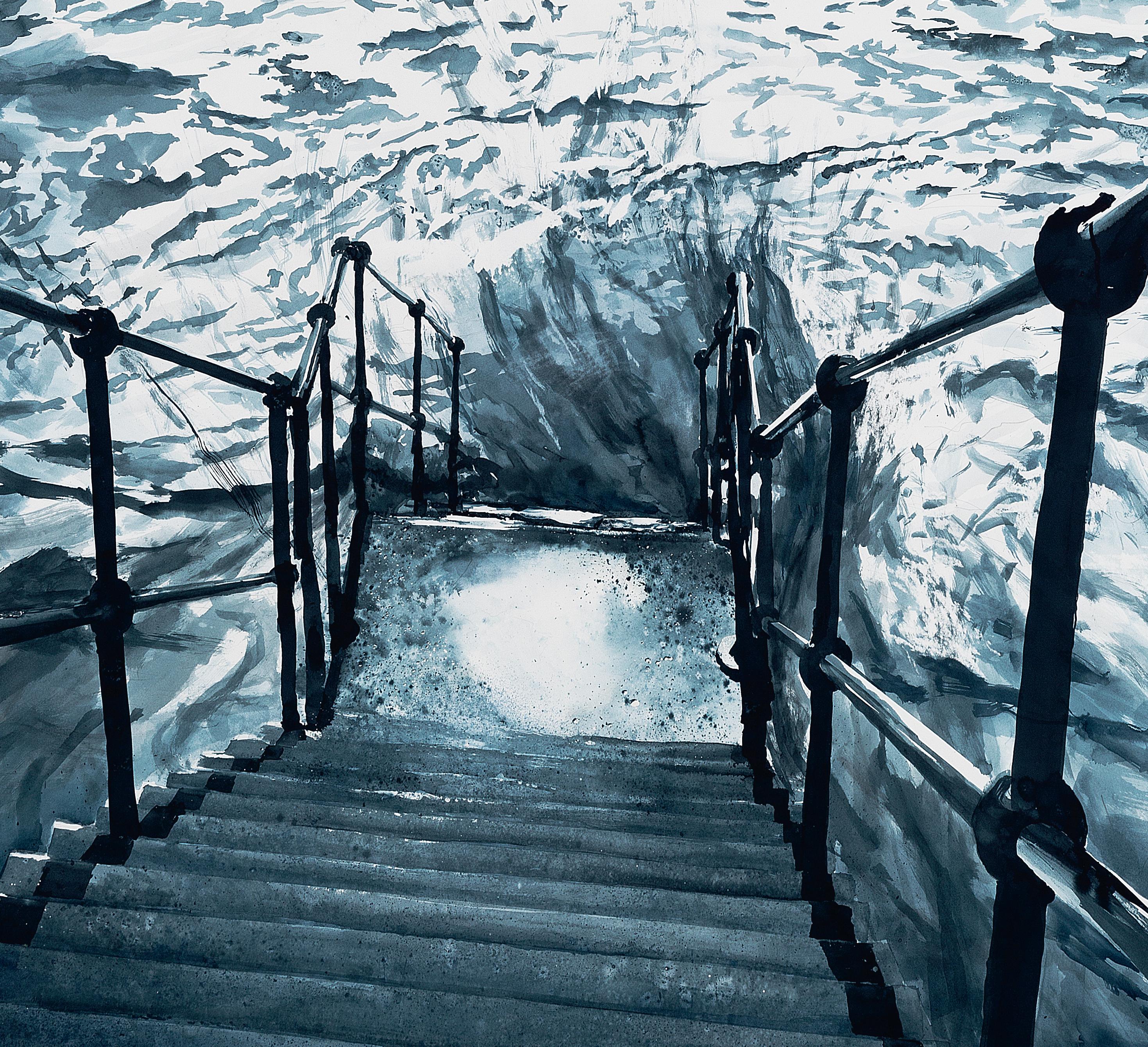

Caroline Lucas MP
There is a raw, savage beauty in Emma Stibbon’s work that simultaneously captures both the permanence and the fragility of the natural world. The stark rock faces and the roiling seas seem like they have been, and will be, there forever. Yet we know that the landscapes we see today are changing in our lifetimes as a direct result of human activity, whether it’s melting ice at the polar regions or the accelerating erosion of our own stunning Sussex coastline. So when I look at Emma’s work, I find myself asking what those landscapes will look like in 50 years’ time? Will that glacier still be there? Or that cliff face? Will families still be playing on that beach, or walking along that clifftop? What will future generations see when they stand on the same spot – if indeed that same spot even still exists?
This sense of the familiar becoming unfamiliar was also the inspiration behind an exhibition I had the privilege of curating at Towner Eastbourne four years ago, which drew on the wonderful collection of landscapes at the gallery. The exhibition was called ‘Brink’, to reflect the sense of being on the edge of massive, irreversible change, because while we’ve been warned about the accelerating climate emergency for decades and have reams of scientific data setting out the deadly impact of our actions, it has failed to lead to the political and economic changes we so urgently need. We don’t lack facts or evidence about the climate crisis. What’s lacking is the political will to act, and this is at least partly because of a devastating failure of imagination: it seems that we simply don’t grasp what we’re doing to our collective home – or if we do, we don’t believe there’s anything we as individuals can do to change it.
This is what makes the work of artists like Emma Stibbon, and her exhibition ‘Melting Ice | Rising Tides’, so important. They help us to connect with the world around us and feel – emotionally and viscerally – the reality of what we’re doing in ways that can be far more effective than a political speech or a campaign leaflet. Emma’s work feeds our imagination, inspires us to act, and shows us that each and every one of us can make a difference.
You typically make your drawings on paper. Cliff Fall (2023), the large-scale wall installation and centrepiece of the Towner exhibition, is fundamentally a drawing, but what was your aim in moving away from drawing on paper and into 3D installation for this work?
Standing under the precarious chalk cliffs makes you feel very vulnerable. I wanted to give a physical sense of the immensity of them towering above, so I decided to make an installation of a rock fall that projects out of the wall and spills into the gallery space. Working on such a large scale was like creating a stage set, my aim being to create the experience of being immersed in the drawing. I made Cliff Fall to be installed opposite Breaker in the gallery to suggest the erosive power of the sea that pounds the base of the cliffs, with the viewer trapped between them.
We’ve talked about how the exhibition is not only a stark reminder of the impacts of climate change but also, through the beauty of your work, a way for audiences both to appreciate what there is to lose and to visualise some of the more distant landscapes you’ve visited. Was this your purpose?
My primary motivations for making work are awe and a fascination with the power and beauty of nature. But I’m increasingly conscious that we’re living through unprecedented times and as an artist I now feel committed to recording my observations of the impact of climate change in my work.
We started our conversation thinking about how changes in seemingly remote parts of the globe affect our own familiar landscapes. Of course, this implies the opposite, that our behaviour affects other parts of the world. Indeed, although the UK is experiencing the impact of rising sea levels and increased storm events, other parts of the planet are seeing far more destruction: the least carbon-emitting societies are hit hardest and are the least well equipped to deal with the consequences. Our relationship with the landscape is very uncertain, and we need to realise our interconnectedness and our responsibilities to other parts of the world. The question is how we might adapt and to what degree we can influence the future?
What do you think art can offer people in this context that perhaps science and politics cannot?
Increasingly I believe art has an important role to play in the urgent debates of our time. As an artist I feel I’m a witness to what is happening in my lifetime, and the challenge for me is how to render it through my drawings. There is a tenderness to the human touch of drawing that really connects us, it has a directness that speaks in ways that hard science can’t. Although scientific data clearly demonstrate the impact of dramatic increases in global warming, and we can see the effects of this for ourselves, perhaps the artist’s more creative methods of communication can engage our emotions to provoke thought and even help to galvanise us into changing our behaviour.










